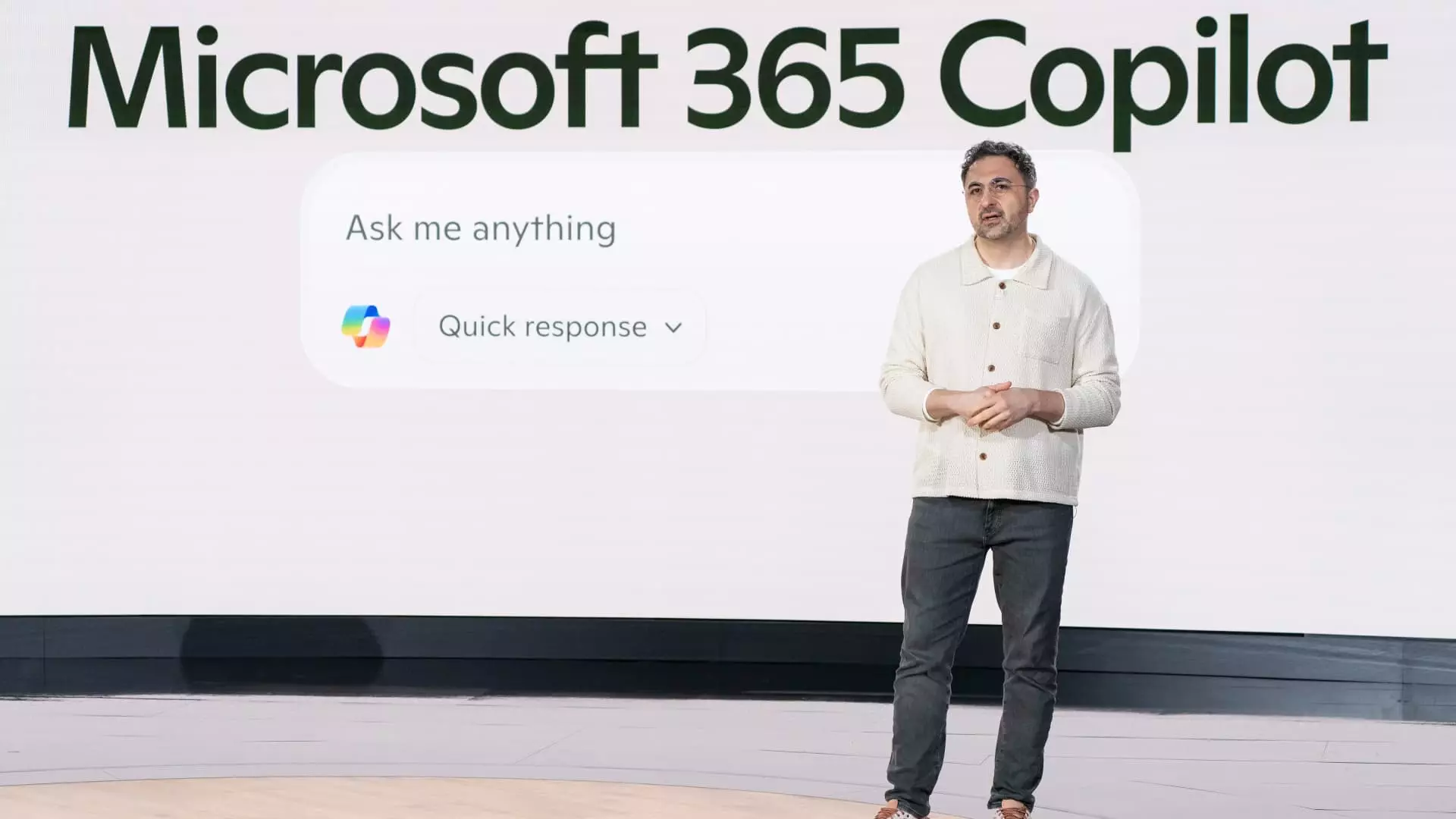In an era defined by rapid technological advances, Microsoft has adopted an intriguing approach to artificial intelligence (AI)—namely, a measured strategy that prioritizes timing over urgency. The tech giant’s decision not to spearhead the development of state-of-the-art AI models, despite owning significant resources like Nvidia’s graphics processing units (GPUs), reflects a sophisticated understanding of market dynamics articulated by Mustafa Suleyman, CEO of AI at Microsoft. Suleyman’s insights point to a strategy that favors a watchful yet engaged position; they advocate for waiting a few months to refine models rather than rushing headfirst into the competition.
By adopting this “off-frontier” mentality, Microsoft capitalizes on lessons learned from leaders in AI innovation. Suleyman argues convincingly that waiting can lead to reduced costs and heightened focus on specific applications, which can result in superior products. In a climate where many corporations are often fixated on being first to market, Microsoft is steering clear of the pitfalls associated with premature launches. This strategy allows them to harness advancements made by those who precede them, ensuring that their offerings are both relevant and robust.
The Dream Team: Collaboration as a Cornerstone
Collaboration is rapidly becoming a linchpin of successful innovation. Microsoft has strategically aligned itself with powerhouses like OpenAI, utilizing their cutting-edge models to enhance products such as Bing and Windows. This relationship showcases a growing trend in tech where partnerships often yield richer results than solitary efforts. By settling into this collaborative stance, Microsoft is not merely keeping pace—it’s positioning itself to thrive in a collaborative ecosystem where shared intelligence can produce exceptional outcomes.
Interestingly, as Suleyman mentioned, Microsoft’s long-standing commitment—upwards of $13.75 billion—emphasizes the notion that sometimes lasting success will come from building sustained relationships rather than outpacing competitors. By facilitating co-creation with external entities, Microsoft is demonstrating agility in balancing both internal capabilities and external expertise. Given the current landscape rife with rapid advancements and shifting partnerships, this hybrid model appears to be a wise choice.
Innovative Memory: Redefining User Experience
In line with its strategic collaborations, Microsoft is also committed to enhancing user experience across its platforms. The rollout of memory capabilities within Microsoft’s Copilot exemplifies this focus on personalization and user retention. By intelligently remembering key details about users, Microsoft aims to create a seamless interaction that feels personal and engaging. This feature, which initially debuted via OpenAI’s ChatGPT, shows Microsoft’s ambition to not just keep up but also mold the future of user experiences in AI-driven applications.
The approach signifies a shift from one-size-fits-all technologies to user-driven solutions. By adopting an awareness of user behavior and preferences, Microsoft can effectively generate tailored recommendations and insights, ultimately solidifying user loyalty and satisfaction. This evolution toward making AI more human-like can potentially set Microsoft apart in a crowded marketplace.
Future-Proofing: A Vision for AI Independence
Despite its reliance on strategic partnerships, Suleyman emphasizes a critical long-term vision: Microsoft’s ambition to achieve AI self-sufficiency. This perspective places Microsoft at an intriguing crossroads—it is committed to internal development and innovation while simultaneously recognizing the necessity of partnerships. As competitors like Oracle begin to encroach on previously exclusive collaborative spaces, Microsoft’s current alliances add a layer of security, even as it builds its independent capabilities.
The emphasis on future forecasts—like ensuring that Microsoft’s AI has a self-sufficient competency within the next decade—underscores the company’s proactive stance. The tech world is notorious for its rapid shifts, and establishing a solid internal foundation for AI will ensure Microsoft remains agile and capable of responding to unforeseen challenges. In a world full of uncertainty, investing in internal capacities can be a buffer against market volatility.
Charting a Balanced Course
In a landscape characterized by competition and technological upheaval, Microsoft’s deliberate approach toward AI development speaks volumes about its vision for the future. By prioritizing patience, collaboration, and personalization, the tech giant is illustrating that innovation doesn’t always require swift and radical actions. Instead, it can flourish through thoughtful strategies that embrace both internal strengths and external alliances. As the narrative continues to evolve, Microsoft’s journey serves as an enlightening case study in modern AI development—and perhaps a blueprint for other companies seeking to navigate this complex, dynamic landscape.

